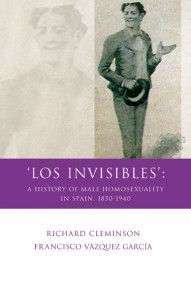 “Los Invisibles” : A History of Male Homosexuality in Spain, 1850-1940
“Los Invisibles” : A History of Male Homosexuality in Spain, 1850-1940
by Richard Cleminson and Francisco Vásquez Garcia
University of Wales Press
311 pages, $85.
IN THE 19TH CENTURY, historians broadly agree, huge changes occurred in West European cultures and beyond in the discussion, recognition, and treatment—legal, political, and medical—of male homosexuality. Strict followers of the tenets of Michel Foucault—if fewer and less adamant of late—argue that prior to the articulation of modern notions of homosexuality (one which used contemporary terms such as “the homosexual,” for instance), neither “homosexuality” nor “the [male]homosexual” can be said to have existed. True, there may have been “sodomites,” but these were as different in kind as the word is distinct in its etymology, significance, and spelling.
Even Foucault skeptics like me can accept that seismic differences existed between the sense of the sexual—including the homosexual—that existed across Europe when Queen Victoria came to power in 1837 and when she died in 1901. The vicissitudes of change, however uniformly comprehensive in scale, were radically different in kind across the continent’s many diverse countries and cultures. I’d say that no country has received as much critical attention to date with respect to the status of the male homosexual in the 19th century as France (about half a dozen important monographs in the last five years alone). Great Britain, Germany, and the Netherlands are obvious runners-up. Meanwhile, other candidates for attention—Russia and Italy, say—await their turn. Spanish culture, similarly, has given rise to only a very limited academic response to date, though some former colonies, such as Argentina and Cuba, have seen scholarly work on the history of homosexuality. Much of this material, however, has not been available to English readers.





